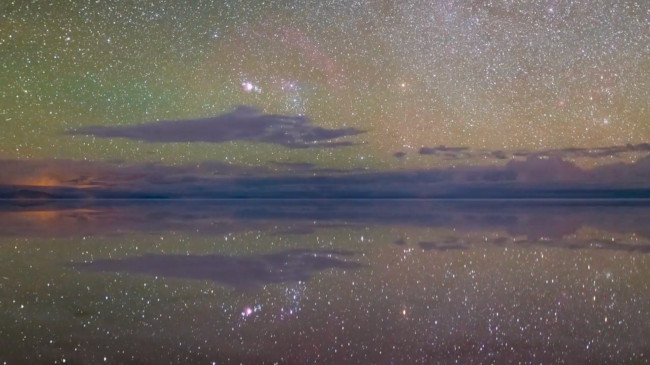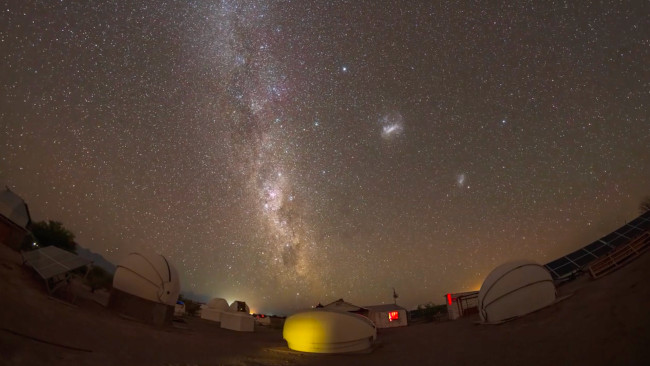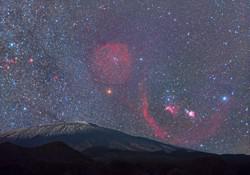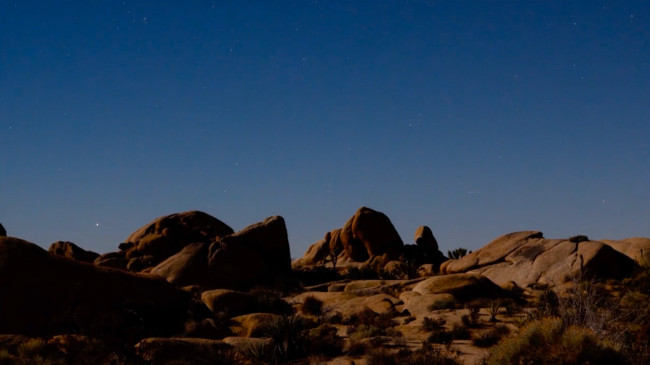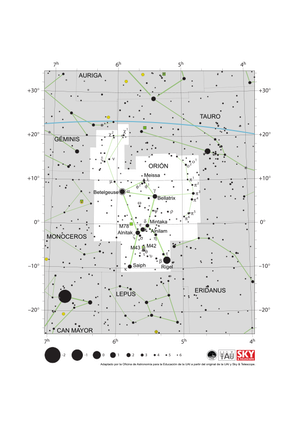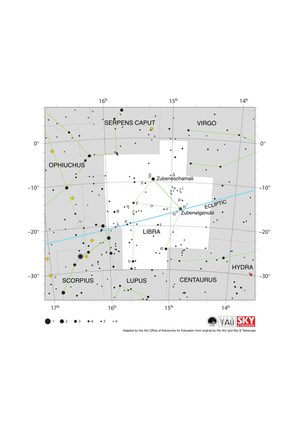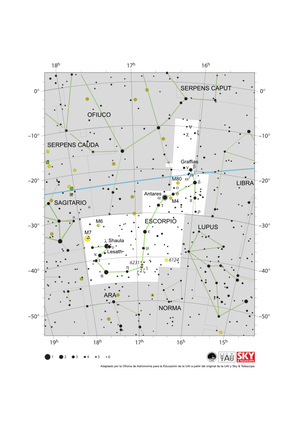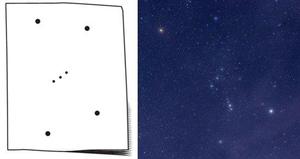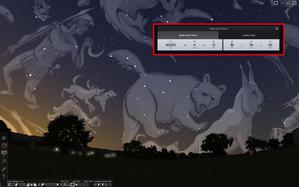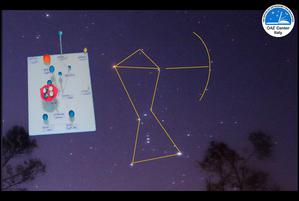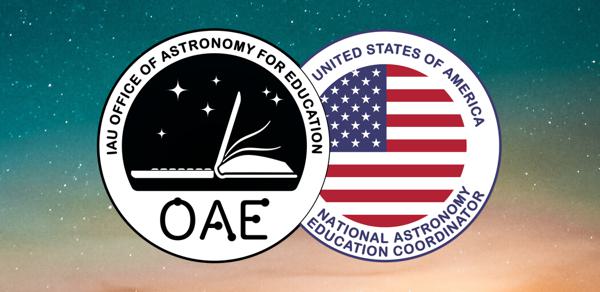Glossary term: Constelación
Description: En términos técnicos modernos, una constelación es un segmento poligonal de la esfera celeste. La Unión Astronómica Internacional ha dividido toda la esfera celeste en 88 regiones: las constelaciones. Este sistema se basa en las que se utilizaban en la antigua Grecia, a las que se han añadido otras más recientes, sobre todo en el hemisferio sur. Cada una de las 88 constelaciones ocupa una parte determinada del cielo y, por tanto, cada uno de los cuerpos celestes, desde las estrellas a las galaxias, pasando por las nebulosas, etc., puede asociarse a una constelación. El Zodíaco son 13 constelaciones que se superponen a la eclíptica (la trayectoria anual trazada por el Sol a través de la esfera celeste). Las 13 constelaciones son: Ofiuco, Sagitario, Capricornio, Acuario, Piscis, Aries, Tauro, Géminis, Cáncer, Leo, Virgo, Libra y Escorpio.
Las constelaciones contienen agrupaciones de estrellas (asterismos) que sugieren un patrón visto desde la Tierra. Estos patrones se describen imaginariamente como representaciones de seres humanos, animales u otros objetos reconocibles.
Related Terms:
See this term in other languages
Term and definition status: The original definition of this term in English have been approved by a research astronomer and a teacher The translation of this term and its definition have been approved by a research astronomer and a teacher
The OAE Multilingual Glossary is a project of the IAU Office of Astronomy for Education (OAE) in collaboration with the IAU Office of Astronomy Outreach (OAO). The terms and definitions were chosen, written and reviewed by a collective effort from the OAE, the OAE Centers and Nodes, the OAE National Astronomy Education Coordinators (NAECs) and other volunteers. You can find a full list of credits here. All glossary terms and their definitions are released under a Creative Commons CC BY-4.0 license and should be credited to "IAU OAE".
If you notice a factual or translation error in this glossary term or definition then please get in touch.
Related Media
Between Two Skies
Credit: Fabrizio Melandri/IAU OAE
License: CC-BY-4.0 Creative Commons Reconocimiento 4.0 Internacional (CC BY 4.0) icons
Constellations from the World
Credit: Stephanie Ye Ziyi/IAU OAE
License: CC-BY-4.0 Creative Commons Reconocimiento 4.0 Internacional (CC BY 4.0) icons
Chilean Nights
Credit: Robert Barsa/IAU OAE
License: CC-BY-4.0 Creative Commons Reconocimiento 4.0 Internacional (CC BY 4.0) icons
Orion Rises Over Mount Etna
Credit: Dario Giannobile/IAU OAE
License: CC-BY-4.0 Creative Commons Reconocimiento 4.0 Internacional (CC BY 4.0) icons
The Culmination of Canopus
Credit: Fabrizio Melandri/IAU OAE
License: CC-BY-4.0 Creative Commons Reconocimiento 4.0 Internacional (CC BY 4.0) icons
Related Diagrams
Mapa de la constelación de Andrómeda
Credit: Adaptado por la Oficina de Astronomía para la Educación de la UAI a partir del original de IAU/Sky & Telescope
License: CC-BY-4.0 Creative Commons Reconocimiento 4.0 Internacional (CC BY 4.0) icons
Mapa de la Constelación Crux
Credit: Adaptado por la Oficina de Astronomía para la Educación de la UAI a partir del original de UAI/Sky & Telescope.
License: CC-BY-4.0 Creative Commons Reconocimiento 4.0 Internacional (CC BY 4.0) icons
Mapa de la constelación de Orión
Credit: Adaptado por la Oficina de Astronomía para la Educación de la UAI a partir del original de UAI/Sky & Telescope
License: CC-BY-4.0 Creative Commons Reconocimiento 4.0 Internacional (CC BY 4.0) icons
Libra Constellation Map
Credit: Adapted by the IAU Office of Astronomy for Education from the original by IAU/Sky & Telescope
License: CC-BY-4.0 Creative Commons Reconocimiento 4.0 Internacional (CC BY 4.0) icons
Mapa de la constelación de Escorpio
Credit: Adaptado por la Oficina de Astronomía para la Educación de la UAI a partir del original de UAI/Sky & Telescope
License: CC-BY-4.0 Creative Commons Reconocimiento 4.0 Internacional (CC BY 4.0) icons
Related Activities
What is a Constellation?
astroEDU educational activity (links to astroEDU website) Description: Investigate three dimensional objects and perspective using constellations
License: CC-BY-4.0 Creative Commons Reconocimiento 4.0 Internacional (CC BY 4.0) icons
Tags:
Hands-on
Age Ranges:
6-8
, 8-10
Education Level:
Primary
Areas of Learning:
Modelling
, Social Research
Costs:
Medium Cost
Duration:
1 hour 30 mins
Group Size:
Group
Skills:
Analysing and interpreting data
, Asking questions
, Constructing explanations
, Developing and using models
Make a Star Lantern
astroEDU educational activity (links to astroEDU website) Description: Learn about constellations by building a star lantern.
License: CC-BY-4.0 Creative Commons Reconocimiento 4.0 Internacional (CC BY 4.0) icons
Age Ranges:
6-8
, 8-10
Education Level:
Primary
Areas of Learning:
Fine Art focussed
, Interactive Lecture
Costs:
High Cost
Duration:
1 hour 30 mins
Group Size:
Group
Skills:
Asking questions
, Communicating information
, Developing and using models
Moving constellations
astroEDU educational activity (links to astroEDU website) Description: Let's learn how stars in constellations move through time using real astronomical images.
License: CC-BY-4.0 Creative Commons Reconocimiento 4.0 Internacional (CC BY 4.0) icons
Tags:
Software
, Data analysis
, stellarium
, gaia
, hipparcos
, ursa major
Age Ranges:
10-12
, 12-14
, 14-16
, 16-19
, 19+
Education Level:
Middle School
, Secondary
Areas of Learning:
Guided-discovery learning
, Observation based
, Technology-based
Costs:
Free
Duration:
3 hours
Skills:
Analysing and interpreting data
, Asking questions
, Communicating information
, Developing and using models
, Engaging in argument from evidence
Orion constellation in 3D
astroEDU educational activity (links to astroEDU website) Description: Let's make a simple model of the Orion constellation
License: CC-BY-4.0 Creative Commons Reconocimiento 4.0 Internacional (CC BY 4.0) icons
Age Ranges:
8-10
, 10-12
Education Level:
Primary
Areas of Learning:
Guided-discovery learning
, Modelling
, Social Research
Costs:
Low Cost
Duration:
2 hours
Group Size:
Group
Skills:
Analysing and interpreting data
, Asking questions
, Developing and using models

